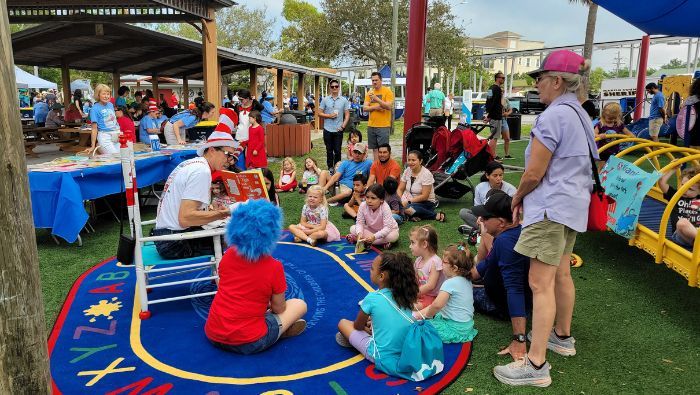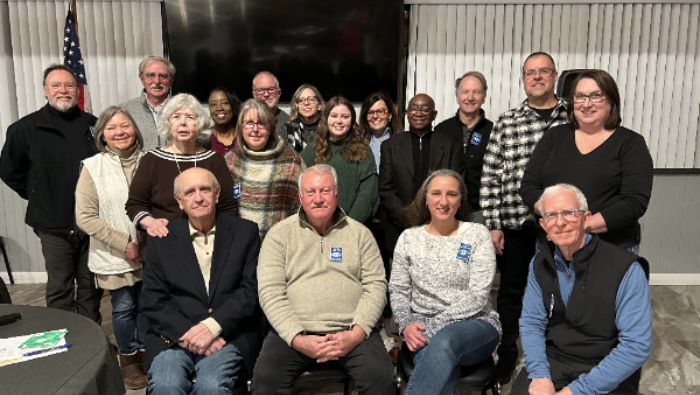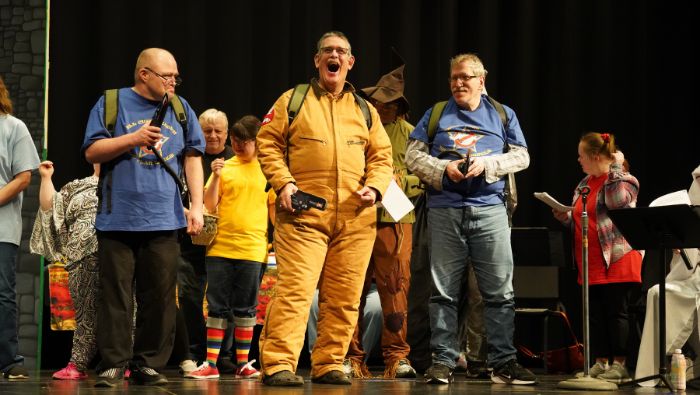For a club in Ohio, U.S., the year’s recruiting has brought 20 new members.
By Tony Knoderer
On February 20, the Kiwanis Club of Berea, Ohio, U.S., held an induction ceremony for 16 new members. Add those to the four members whom the club had welcomed previously in the Kiwanis year, and that’s 20 new members since October.
For the Berea club, the induction was the latest reward for a reinvigorated recruiting effort. But it wasn’t just about adding names to the roster, says Jeff Haas, the club’s president.
“The issue was not so much membership,” Haas explains. “It was about having active members.”
In a club that consisted of 85 people at the start of the Kiwanis year, he adds, about 25 could be counted on to attend meetings. And a core of about 10 people did much of the work at meetings and projects.
It wasn’t that the other members refused to participate at all. But larger commitments, such as leadership roles, often came down to the same people year after year.
“Eventually, those 10 people won’t be there,” Haas says. “We need people who bleed Kiwanis blue.”
That’s what made the induction ceremony gratifying for the club’s leaders.
“When folks got inducted that night, we took time and asked them why they had come,” Haas says. “They said they wanted to get involved. That’s important. We don’t expect people to become an officer in six months — but we want people who are active.”
A new committee
The induction ceremony was the culmination of the club’s renewed commitment to getting engaged members. It began in October, at the start of the Kiwanis year, when Haas became club president — and when club member Jeff Wayner became chair of the club’s recruiting committee.
In fact, that was the start of the recruiting committee itself. Even in a club the size of Berea’s, such a committee led to new ways of thinking about growth and retention.
“The first thing I did,” Wayner says, “was to ask for volunteers to join the committee. I got five other people. And our first meeting, we decided what we need is a video of what we do, a better, refreshed website — and an open house.”
The video, by design, is simple and straightforward about what the club does. Even the title provides plain information: “Our Story in 5 Minutes!” And the link to the video is placed prominently on the club’s home page.
The other action item from that first committee meeting — the open house — became a matter of sustained focus.
“Rather than hoping the door opens and someone walks in and wants to be a member, we wanted an event where people can learn about Kiwanis,” Wayner says.
That required preparation, inside and outside of club meetings.
Links in the chain
Like many successful Kiwanis clubs, the Berea club drew upon existing factors in the community: a relationship with local leadership and a knowledge of what interests people. For instance, members invited Berea’s mayor, Cyril Kleem, to speak at a club meeting — and then made a special effort to invite as many community members as possible to attend.
“Cyril supports us,” Haas says. “That’s key. He’s a real advocate. And he’s a great speaker.”
It didn’t hurt that one topic the mayor addressed is a popular one in town: the Cleveland Browns. The National Football League team’s preseason training facility is in Berea, so it’s a natural subject of civic interest — and another reason for local people to show up.
Of course, attendees at that meeting were then invited to the club’s open house.
“That meeting led to the open house, which led to the induction ceremony in February,” Haas says.
But those weren’t the only links in the chain. Members put notices in local publications, even including church bulletins, and visited local institutions.
“The police department had a shift change at 6:45 one morning, and Jeff and I were there,” Haas says with a smile. “We have good relationships. The chief of police accepted us, and the fire chief accepted us.”
Wayner also relied on a time-tested virtue: personal contact.
“I called people all through my address book,” he says. “The phone — that little gadget we all carry around today — that’s my No. 1 tool for recruiting people.”
To the heart
The work and the planning paid off: Forty prospects came to the open house on January 14.
“We filled the place,” Wayner says. “We were astounded.”
The event was set up with tables for club members and members of local Kiwanis Service Leadership Program clubs to talk with prospects, introducing themselves and answering questions. Some time also was set for presentations, such as an opening address from Haas, a showing of the “five-minute” video and one member’s discussion of the Kiwanis Objects. The club included a Kiwanis leader in the event as well: Alan Penn, executive director of the Ohio District Kiwanis Foundation and 2011-12 Kiwanis International president.
“Alan got people pumped up,” Wayner says. “He’s a good speaker, and he went to the heart. He gave the prospects an idea of what Kiwanis is about.”
Of course, any event that attracts prospects is only successful if it ultimately results in new members. As Wayner said to himself at the time: “Okay, Jeff — we got all these people. How do we make them members?”
Persistence, not perfection
The answer, he says now, was follow-up. Three fellow members joined him for a session to make calls to open house attendees.
“They came to my house, I gave them the list, and we sat down and did it,” he says.
That persistence, from committee formation to open house to follow-up calls, resulted in the 16 new members at the induction ceremony — putting the club over the 100-member mark. But the key, of course, is to have motivated members.
“There’s no magic number of meetings that every person goes to that makes them stick,” Haas says. “We want them to come and see what it’s about — to come regularly and get engaged in it.”
That’s why the club emphasizes persistence rather than perfect attendance for new members.
“We understand you have work, we understand you have family,” Wayner says of the club’s message. “But if you help when you can, you’ll make a difference.”
Resources for your club
Is your club considering an open house but doesn’t know where to start? Kiwanis International has a timeline and checklist to guide you through the process, from planning to hosting. It’s just one of the recruiting resources we offer online.
We can also help you with a new website — thanks to our free, easy-to-use service.
And don’t forget Jeff Wayner’s not-so-secret weapon: “If I could put one thing at the top of my list for what works, it’s the cellphone. That’s my best means of communication.”



